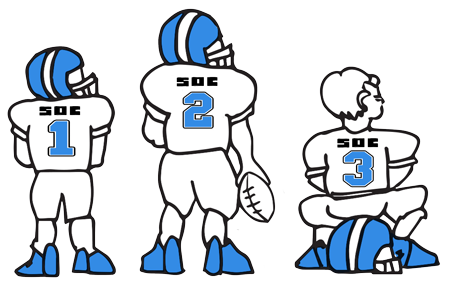ICFiles
SOC 2

Secure File Transfer Soc 2 starts at $1 per month
Liquidation Value Versus Going-Concern Value
Accounting News
June, 2024
Liquidation Value Versus Going-Concern Value
 Whether it's a company firing on all cylinders or a company on the verge of liquidation, determining correct valuations is not a cut-and-dry process. Understanding the importance of going-concern values and liquidation values is essential when determining a business' worth.
Whether it's a company firing on all cylinders or a company on the verge of liquidation, determining correct valuations is not a cut-and-dry process. Understanding the importance of going-concern values and liquidation values is essential when determining a business' worth.
Quantifying Going-Concern Value
When it comes to defining this type of value, it factors in the likelihood of a business operating indefinitely with continued profitability. With a company's demonstrated ability to maintain profitability comes inherent value, reducing the likelihood of a business going bankrupt.
In contrast to a business’ liquidation value basis, which might only be $20 million due to unsold goods, real property and associated physical assets, the going-concern value might be worth $120 million. The difference and increase in value are due to the additional equity embedded in its competitive position in its industry, its projected future cash flows, goodwill, etc. Goodwill consists of the company's name, its intellectual property (IP) patent, trademarks, customer loyalty, etc.
When one company looks to acquire another, the company bases its valuation on the calculated going-concern value of the acquiree. When formulating its offer to purchase the other, it will factor in its future profitability, intangible assets, customer loyalty, and goodwill.
Liquidation Value Defined
Liquidation value is determined by establishing the net value of a company's physical or tangible assets if they were to go out of business. It's important to distinguish that intangible assets (intellectual property, brand significance, and goodwill) are not included in liquidation sales. Assets are often sold at a loss because the seller must turn the assets into cash quickly. Generally, liquidation valuation is higher than salvage value but less than book value. Though, to contrast with a traditional, non-acquisition sale, intangible assets are considered part of the sale/offer price.
One important concept for determining liquidation value is the recovery rate. Cash is naturally the highest level, usually at 100 percent. From there, assets such as accounts receivable (AR), inventory, property, plant, and equipment (PPE) have progressively lower recovery values. Determining these values will accordingly govern the success of a liquidation sale.
Comparing Values: Market vs. Book vs. Liquidation vs. Salvage
It's important to highlight the hierarchy of values to illustrate why these types of valuations differ so much. Market value is the highest, though market conditions can temporarily lower them below normal valuations. Book value is the second highest, also known as historical, and it is what's listed on the company's balance sheet. Book values must be looked at through the lens of history and relative to inflation, etc. Salvage value is the second lowest valuation, which is also referred to as scrap value, or when an item is “at the end of its useful life.” Liquidation is the lowest value because tangible assets must be sold quickly, lessening the chance to find a buyer at a fair price.
How Liquidation Works
Liquidation is the difference between a company's tangible asset value and liabilities. For example:
1. Liabilities of a business are $750,000
2. Balance sheet assets show a book value of $1.5 million
3. Salvage value of assets is $250,000
4. Auction sale estimate value is $1.2 million, or 80 percent
Liquidation Value = Auction Value - Liabilities ($1.2 million - $750,000 = $450,000)
Many variables must be studied to effectively determine a company's value, regardless of what spectrum is being evaluated. Employees and consultants who have a better grasp of these methods will provide everyone involved with a fair assessment.
These articles are intended to provide general resources for the tax and accounting needs of small businesses and individuals. Service2Client LLC is the author, but is not engaged in rendering specific legal, accounting, financial or professional advice. Service2Client LLC makes no representation that the recommendations of Service2Client LLC will achieve any result. The NSAD has not reviewed any of the Service2Client LLC content. Readers are encouraged to contact their CPA regarding the topics in these articles.
Dynamic Content Powered by Service2client.com
SEO Content Powered by DynamicPost.net






